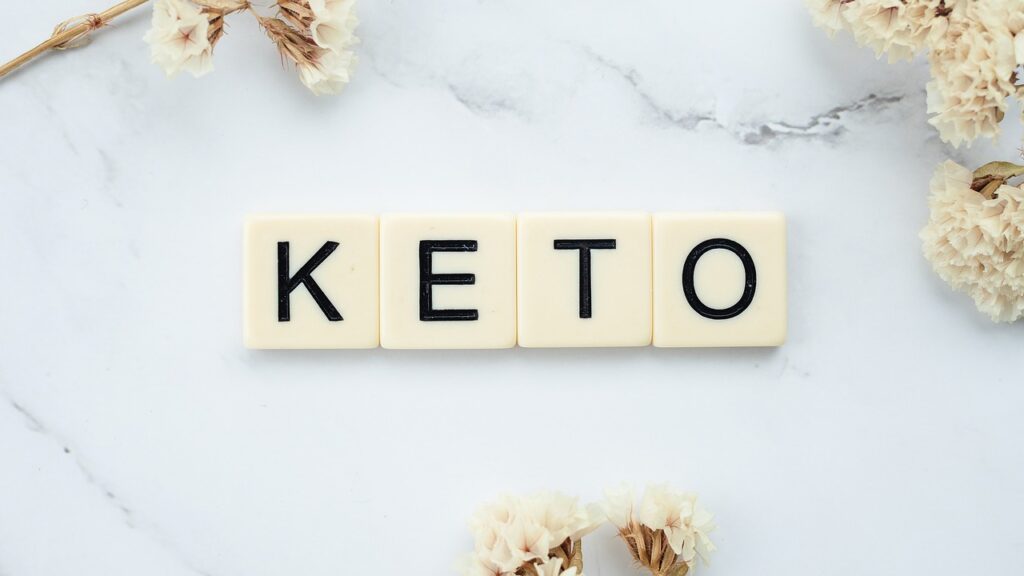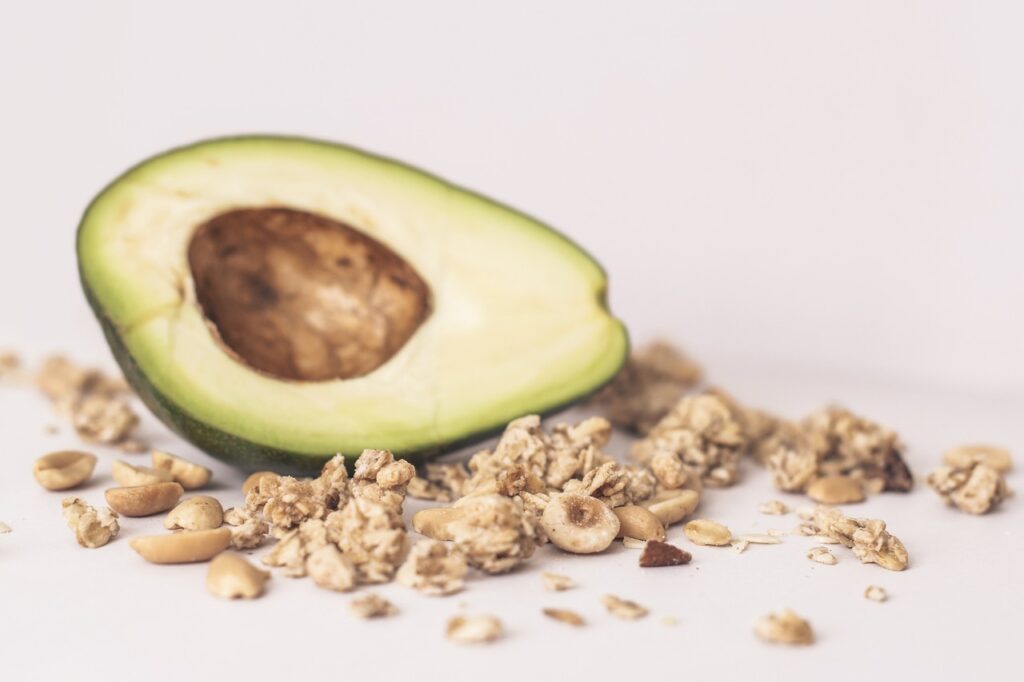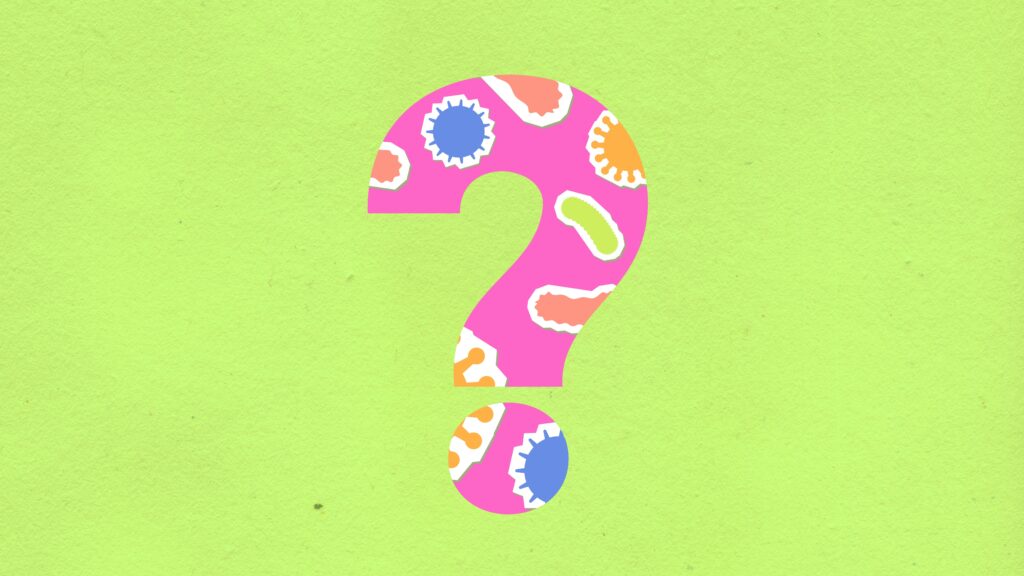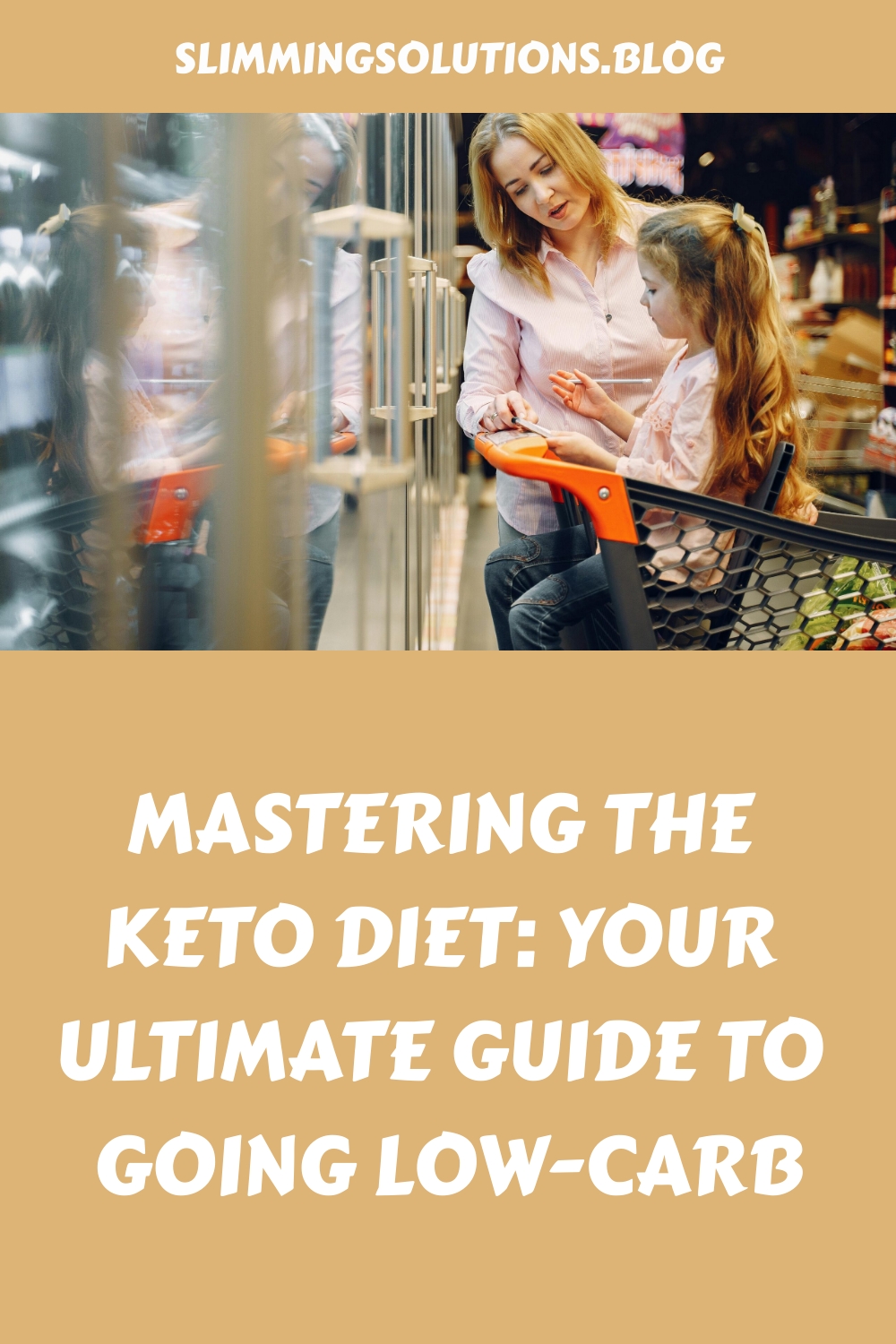
Table of Contents
Table of Contents
- Introduction
- Overview of the Keto Diet
- Ketosis: The Foundation of Keto
- Understanding Ketosis and Its Role in the Keto Diet
- The Science of Ketosis
- Ketosis and Ketogenic Diet Relationship
- Helpful Tip: Achieving Ketosis
- The Safety of Ketosis: Is It for Everyone?
- Safety Concerns and Benefits
- Common Misconceptions
- Keto Diet and Health Conditions
- Helpful Tip: Consulting Healthcare Providers
- Navigating Carbs on a Keto Diet
- Role of Carbs in Keto
- Net Carbs Concept
- Reintroducing Carbs
- Helpful Tip: Tracking Net Carbs
- Essential Foods to Kickstart Your Keto Journey
- Top Keto Foods
- Balanced Keto Meals
- Helpful Tip: Meal Prep
- Healthy Keto-Friendly Snacks to Keep You on Track
- Popular Keto Snacks
- Homemade Snack Ideas
- Helpful Tip: Choosing Healthy Snacks
- Grocery Shopping for Keto Success
- Keto Snacks at Stores
- Label Reading Tips
- Helpful Tip: Planning Keto Shopping
- Conclusion
- Mastering the Keto Diet
- Final Tips for Success
- Call to Action
- Experimenting with Keto
- Community Engagement
- Frequently Asked Questions
- Ketosis and Weight Loss
- Keto Diet Safety
- Managing Carbs
- Essential Keto Foods
- Healthy Snack Options
- Grocery Shopping Tips
The keto diet has become increasingly popular in recent years, thanks to its potential for weight loss and a host of other health benefits. But what is the keto diet, and how does it work? The keto diet is a low-carb, high-fat diet that aims to put your body into a state of ketosis, where it burns fat for fuel instead of glucose. In this article, we’ll explore the science behind ketosis and the keto diet, as well as its safety, how to navigate carbs on a keto diet, and essential foods and snacks to help you get started.
Understanding Ketosis and Its Role in the Keto Diet: Ketosis is a metabolic state where your body burns fat for fuel instead of glucose. When you follow a keto diet, you restrict your carb intake to a minimum and increase your fat intake, which forces your body to switch from burning glucose to burning fat. This process leads to the production of ketones, which your body uses as fuel. A key aspect of the keto diet is that it emphasizes the consumption of healthy fats, such as avocados, nuts, and olive oil, while limiting carbs, such as bread, pasta, and sugar.
Tip: To achieve ketosis, you need to keep your carb intake low and your fat intake high. A good starting point is to aim for less than 50 grams of carbs per day.
The Safety of Ketosis: Is It for Everyone?: While the keto diet can be an effective way to lose weight and improve health markers, it’s not for everyone. People with certain health conditions, such as liver or pancreatic disease, should avoid the keto diet. Additionally, the keto diet can cause side effects such as the keto flu, which is a temporary condition that can cause fatigue, headaches, and nausea. It’s important to consult with your doctor before starting the keto diet to make sure it’s safe for you.
Tip: If you’re new to the keto diet, start slowly and gradually increase your fat intake while reducing your carb intake. This will help you avoid the keto flu and other side effects.
Key Takeaways
- The keto diet is a low-carb, high-fat diet that aims to put your body into a state of ketosis, where it burns fat for fuel instead of glucose.
- To achieve ketosis, you need to keep your carb intake low and your fat intake high.
- While the keto diet can be effective for weight loss and improving health markers, it’s not for everyone and should be approached with caution.
Understanding Ketosis and Its Role in the Keto Diet

The keto diet is a low-carb, high-fat diet that has become increasingly popular in recent years. The foundation of the keto diet is ketosis, a metabolic state in which the body burns fat for energy instead of carbohydrates. In this section, we will explore what ketosis is and how it relates to the keto diet.
The Science of Ketosis
Ketosis occurs when the body does not have enough glucose (sugar) to use as energy and begins to break down fat instead. When fat is broken down, it produces molecules called ketones, which the body can use as an alternative source of energy. This process is known as ketosis.
To achieve ketosis, you must limit your carbohydrate intake to a very low level, typically around 20-50 grams per day. This forces the body to switch from using glucose as its primary fuel source to using ketones instead.
Ketosis and Ketogenic Diet Relationship
The ketogenic diet is designed to induce and maintain a state of ketosis. By limiting your carbohydrate intake and increasing your fat intake, you can shift your body into a state of ketosis and begin to burn fat for energy.
The primary goal of the keto diet is to enter and maintain a state of ketosis, which can lead to weight loss, improved energy levels, and other health benefits. However, it is important to note that the keto diet is not suitable for everyone and should be approached with caution.
Helpful Tip: To ensure that you are in a state of ketosis, you can use ketone testing strips to measure the levels of ketones in your urine.
The Safety of Ketosis: Is It for Everyone?

Safety Concerns and Benefits
The keto diet has gained popularity in recent years due to its promising potential health benefits, including weight loss, improved blood sugar control, and increased energy levels. However, like any diet, it has its potential risks and benefits.
One of the main concerns with the keto diet is the risk of nutrient deficiencies, particularly in vitamins and minerals found in fruits, vegetables, and whole grains. To mitigate this risk, it is essential to incorporate nutrient-dense, low-carb foods into your diet, such as leafy greens, nuts, and seeds.
On the other hand, the benefits of the keto diet include the potential for improved mental clarity, reduced inflammation, and increased satiety. Additionally, the keto diet may be beneficial for those with certain health conditions, such as epilepsy, type 2 diabetes, and metabolic syndrome.
Tip: To ensure you are getting all the necessary nutrients on a keto diet, focus on incorporating a variety of low-carb, nutrient-dense foods into your meals.
Common Misconceptions
One common misconception about the keto diet is that it is a high-protein diet. However, the keto diet is actually a high-fat, moderate-protein, low-carb diet. Consuming too much protein can kick you out of ketosis and hinder your weight loss efforts.
Another misconception is that the keto diet is a short-term fix for weight loss. While some people do experience quick weight loss on the keto diet, it is intended to be a long-term lifestyle change rather than a quick fix.
Tip: To stay in ketosis and reap the benefits of the keto diet, focus on consuming high-fat, low-carb foods and moderate amounts of protein.
Keto Diet Health Conditions
While the keto diet may be beneficial for some individuals with certain health conditions, it is not recommended for everyone. People with liver or pancreatic disease, thyroid disorders, or gallbladder issues should avoid the keto diet.
Additionally, pregnant and breastfeeding women should avoid the keto diet due to the potential risks of nutrient deficiencies and the lack of research on the effects of ketosis on fetal development.
Tip: Consult with your healthcare provider before starting a keto diet, especially if you have any underlying health conditions.
Navigating Carbs on a Keto Diet

Role of Carbs in Keto
Carbohydrates are typically restricted on a keto diet to induce a state of ketosis, where the body burns fat for fuel instead of glucose. This is because carbs are the primary source of glucose in the body, and when glucose is absent, the liver begins to produce ketones, which the body can use for energy 1.
Net Carbs Concept
Net carbs are the total number of carbohydrates in a food minus the fiber and sugar alcohols. This concept is important for keto dieters because fiber and sugar alcohols do not significantly impact blood sugar levels and can be subtracted from the total carb count.
When tracking net carbs, it is important to choose high-fiber, low-carb vegetables like spinach, broccoli, and cauliflower, as they provide important nutrients while keeping carb intake low. Additionally, sugar alcohols like erythritol and xylitol can be used as sweeteners on a keto diet but should be consumed in moderation to avoid digestive issues 2.
Reintroducing Carbs
While the keto diet is typically low-carb, some people may find that they need to reintroduce carbs for various reasons, such as increased energy needs or improved athletic performance.
If you decide to reintroduce carbs, it is important to do so gradually and mindfully. Start by adding small amounts of healthy, whole-food carbs like sweet potatoes, berries, and quinoa, and monitor your body’s response. You may find that you can tolerate more carbs than you thought, or that you feel better with a slightly higher carb intake.
Remember that everyone’s carb tolerance is different, and what works for one person may not work for another. Listen to your body and adjust your carb intake accordingly 3.
Helpful tip: When tracking net carbs, be sure to read food labels carefully and calculate the net carb count yourself to ensure accuracy.
Essential Foods to Kickstart Your Keto Journey

If you’re new to the keto diet, it can be overwhelming to figure out which foods to eat and which to avoid. Here are some essential foods to help you kickstart your keto journey.
Top Keto Foods
- Meat and Poultry: Meat and poultry are excellent sources of protein and healthy fats. Opt for grass-fed, organic, and pasture-raised meats whenever possible. Good options include beef, chicken, turkey, lamb, and pork.
- Fish and Seafood: Fish and seafood are also great sources of protein and healthy fats. They are rich in omega-3 fatty acids, which have been shown to have numerous health benefits. Good options include salmon, sardines, mackerel, tuna, and shrimp.
- Low-Carb Vegetables: Low-carb vegetables are high in fiber and nutrients and can be eaten in abundance on the keto diet. Good options include spinach, kale, broccoli, cauliflower, zucchini, and asparagus.
- Eggs: Eggs are a keto staple and can be eaten in a variety of ways. They are high in protein and healthy fats and are also a good source of vitamins and minerals.
- Nuts and Seeds: Nuts and seeds are a great source of healthy fats and can be eaten as a snack or added to meals. Good options include almonds, pecans, macadamia nuts, chia seeds, and flaxseeds.
Balanced Keto Meals
Creating balanced keto meals is all about balancing your macronutrient intake. Aim to get 70-75% of your calories from fat, 20-25% from protein, and 5-10% from carbs.
Here are some tips for creating balanced keto meals:
- Start with a protein source: Choose from meat, poultry, fish, or eggs.
- Add healthy fats: Use olive oil, avocado oil, coconut oil, or butter to cook your protein source.
- Include low-carb vegetables: Add a variety of non-starchy vegetables to your plate to increase fiber and nutrient intake.
- Don’t forget about seasoning: Use herbs and spices to add flavor to your meals without adding carbs.
Tip: Meal prep is key to staying on track with the keto diet. Plan your meals and snacks in advance to ensure you have keto-friendly options on hand at all times.
Healthy Keto-Friendly Snacks to Keep You on Track

If you’re new to the keto diet, finding healthy snacks to keep you on track can be a challenge. Fortunately, there are plenty of delicious and satisfying options to choose from that won’t derail your progress.
Popular Keto Snacks
Some of the most popular keto-friendly snacks include:
- Nuts and seeds: Almonds, walnuts, macadamia nuts, and pumpkin seeds are all great options. They’re high in healthy fats and protein and low in carbs.
- Cheese: Cheese is a great source of protein and fat, and there are plenty of keto-friendly varieties to choose from. Try cheddar, brie, or gouda.
- Olives: Olives are a great source of healthy fats and can be a satisfying snack on their own or added to a salad.
- Jerky: Beef, turkey, and salmon jerky are all great options for a high-protein, low-carb snack.
- Avocado: Avocado is a great source of healthy fats and can be enjoyed on its own or added to a salad or smoothie.
Tip: When choosing nuts and seeds, opt for raw or dry-roasted varieties, and avoid those that are coated in sugar or other additives.
Homemade Snack Ideas
If you prefer to make your own snacks, here are a few keto-friendly ideas:
- Keto granola: Mix together nuts, seeds, coconut flakes, and a bit of sweetener like monk fruit or stevia for a crunchy, satisfying snack.
- Fat bombs: Fat bombs are small, high-fat snacks that can help you stay in ketosis. Try making your own with ingredients like coconut oil, nut butter, and cocoa powder.
- Kale chips: Kale chips are a great alternative to potato chips and can be made easily at home. Simply toss kale leaves with olive oil and your favorite seasonings, and bake in the oven until crispy.
Tip: When making your own snacks, be sure to read labels carefully and avoid high-carb ingredients like grains, sugar, and starchy vegetables.
Grocery Shopping for Keto Success

Going grocery shopping on a keto diet can be overwhelming, but with a little preparation, you can make it a breeze. Here are some tips to help you navigate the grocery store and find the best keto-friendly foods.
Keto Snacks at Stores
When it comes to keto snacks, there are plenty of options available at your local grocery store. Some of the best keto snacks include:
- Nuts and seeds: almonds, macadamia nuts, walnuts, pecans, chia seeds, flaxseeds, and pumpkin seeds are all great options.
- Cheese: look for hard cheeses like cheddar, gouda, and parmesan.
- Deli meat: opt for high-quality, minimally processed meats like turkey, ham, and roast beef.
- Olives: these are a great source of healthy fats and come in a variety of flavors.
- Jerky: choose beef or turkey jerky that is low in sugar and carbs.
Tip: When shopping for snacks, always check the nutrition label for the carb content. Stick to snacks that are low in carbs and high in fat.
Label Reading Tips
Reading food labels is crucial on a keto diet. Here are some tips to help you make informed choices:
- Look for foods that are high in fat and low in carbs. Aim for a ratio of 70% fat, 25% protein, and 5% carbs.
- Avoid foods that contain added sugars or artificial sweeteners.
- Beware of hidden carbs in products like sauces, dressings, and condiments.
- Choose whole, minimally processed foods whenever possible.
Tip: Make a list of keto-friendly foods before you go grocery shopping. This will help you stay on track and avoid impulse buys.
Conclusion
Congratulations! You have now gained a solid understanding of the keto diet and how it can benefit your health and wellness. Remember, the key to mastering the keto diet is to make it a lifestyle, not just a temporary diet. Here are a few final tips to help you on your journey:
- Keep it simple: Stick to whole, nutrient-dense foods and avoid processed and packaged foods as much as possible. This will not only help you stay in ketosis but also provide your body with the essential nutrients it needs to function optimally.
- Stay hydrated: Drinking plenty of water is essential on a keto diet, especially during the initial stages when your body is adapting to burning fat for fuel. Aim for at least 8-10 glasses of water per day, and consider adding electrolytes to your water to replenish lost minerals.
- Be patient: Remember that everyone’s body is different, and it may take some time to see the results you’re looking for. Don’t get discouraged if you don’t see immediate weight loss or other health benefits. Stick with it, and you’ll soon start to see the positive changes in your body and mind.
We hope you found this guide helpful and informative. Remember, the key to success on a keto diet is to stay committed and make it a sustainable lifestyle change. We wish you the best of luck on your keto journey!
Congratulations! You now have a solid understanding of the keto diet and how to make it work for you. But the journey doesn’t end here. To truly master the keto diet, you need to experiment with different foods, recipes, and snacks to find what works best for your body and lifestyle. Here are a few tips to help you continue your keto journey:
- Keep it simple: Don’t overcomplicate your keto meals with fancy ingredients or complicated recipes. Stick to the basics and focus on nutrient-dense, whole foods.
- Plan ahead: Meal planning is key to staying on track with your keto diet. Set aside time each week to plan your meals and snacks, and stock up on keto-friendly ingredients.
- Listen to your body: Everyone’s body is different, so don’t be afraid to experiment with different foods and macros to find what works best for you. Pay attention to how your body responds to different foods and adjust accordingly.
- Connect with others: Join a keto community or find a keto buddy to help you stay motivated and accountable. Share your favorite recipes, tips, and struggles with others who are on the same journey.
Remember, the keto diet is not a one-size-fits-all approach. It may take some trial and error to find what works best for you, but with patience, persistence, and a willingness to experiment, you can master the keto diet and reap its many health benefits.
Frequently Asked Questions

What is ketosis and how does it contribute to weight loss?
Ketosis is a metabolic state in which your body burns fat for fuel instead of carbohydrates. When you limit your carb intake, your body starts producing ketones, which are used as an alternative source of energy. This process can lead to weight loss because your body is burning fat for fuel instead of storing it. To achieve ketosis, you need to limit your carb intake to around 20-50 grams per day, depending on your individual needs. A helpful tip is to focus on eating high-fat, low-carb foods like meat, fish, eggs, and non-starchy vegetables.
Can the keto diet be harmful, and who should avoid it?
While the keto diet is generally safe for most people, it may not be suitable for everyone. People with certain medical conditions, such as liver or kidney disease, may need to avoid the diet. Additionally, pregnant or breastfeeding women should not follow the keto diet. Some people may experience side effects like the keto flu, which can cause headaches, fatigue, and other symptoms. It is important to talk to your doctor before starting the keto diet to ensure it is safe for you. A helpful tip is to listen to your body and make adjustments as needed.
How do you manage carbohydrate intake on a ketogenic diet?
On a ketogenic diet, it is important to limit your carbohydrate intake to around 20-50 grams per day, depending on your individual needs. To do this, focus on eating high-fat, low-carb foods like meat, fish, eggs, and non-starchy vegetables. You can also use low-carb substitutes for your favorite high-carb foods, such as cauliflower rice instead of regular rice. A helpful tip is to track your carb intake using a food diary or app to ensure you are staying within your daily limits.
What are the essential foods to include when starting a keto diet?
When starting a keto diet, it is important to focus on nutrient-dense, high-fat, and low-carb foods. Some essential foods to include in your diet include meat, fish, eggs, non-starchy vegetables, nuts and seeds, healthy fats like olive oil and avocado, and dairy products like cheese and butter. A helpful tip is to plan your meals in advance to ensure you are getting all the nutrients you need.
What are some healthy keto-friendly snack options?
There are many healthy keto-friendly snacks you can enjoy while following a ketogenic diet. Some options include nuts and seeds, cheese, olives, hard-boiled eggs, avocado, and low-carb vegetables like celery and cucumber. You can also make your own keto-friendly snacks, such as homemade trail mix or keto fat bombs. A helpful tip is to keep healthy snacks on hand to avoid reaching for high-carb options.
What tips can you offer for grocery shopping on a keto diet?
When grocery shopping on a keto diet, it is important to read labels carefully and avoid high-carb foods like bread, pasta, and sugary snacks. Instead, focus on buying nutrient-dense, high-fat, and low-carb foods like meat, fish, eggs, non-starchy vegetables, nuts and seeds, and healthy fats like olive oil and avocado. A helpful tip is to shop the perimeter of the grocery store, where you will find fresh produce, meat, and dairy products.


